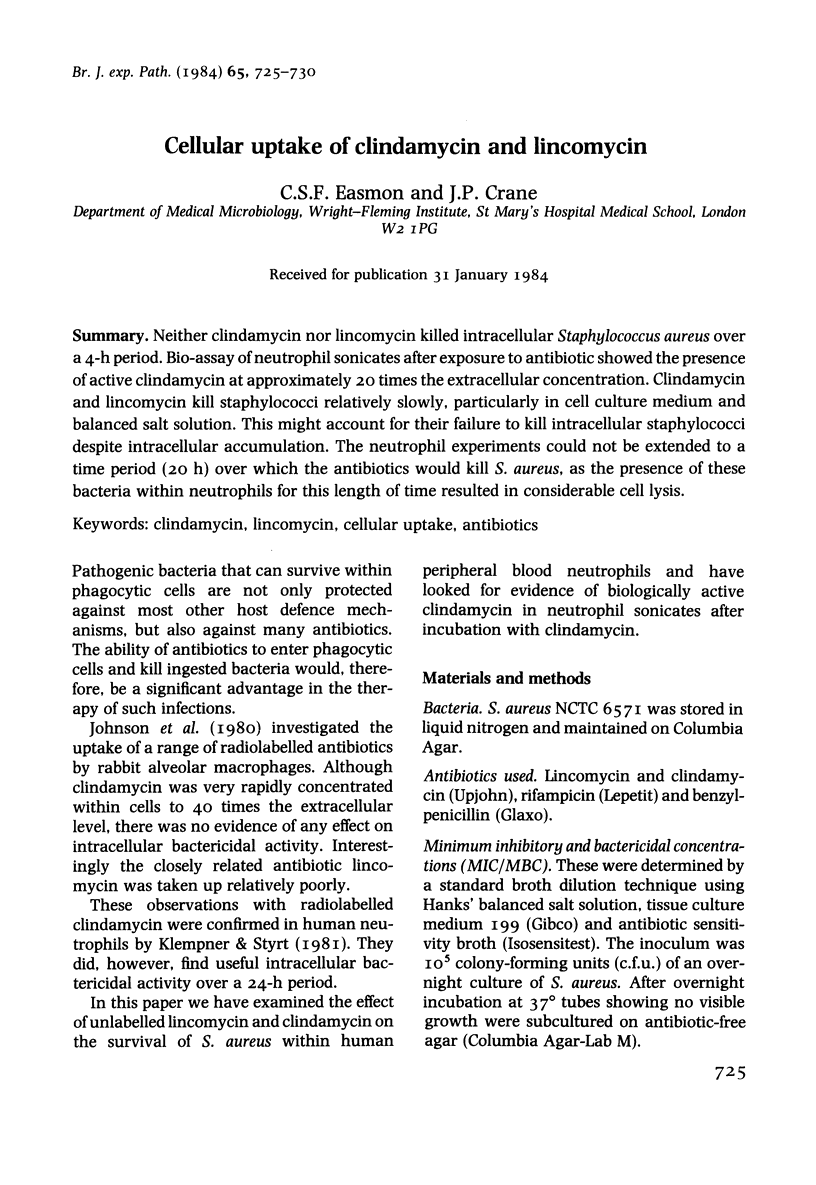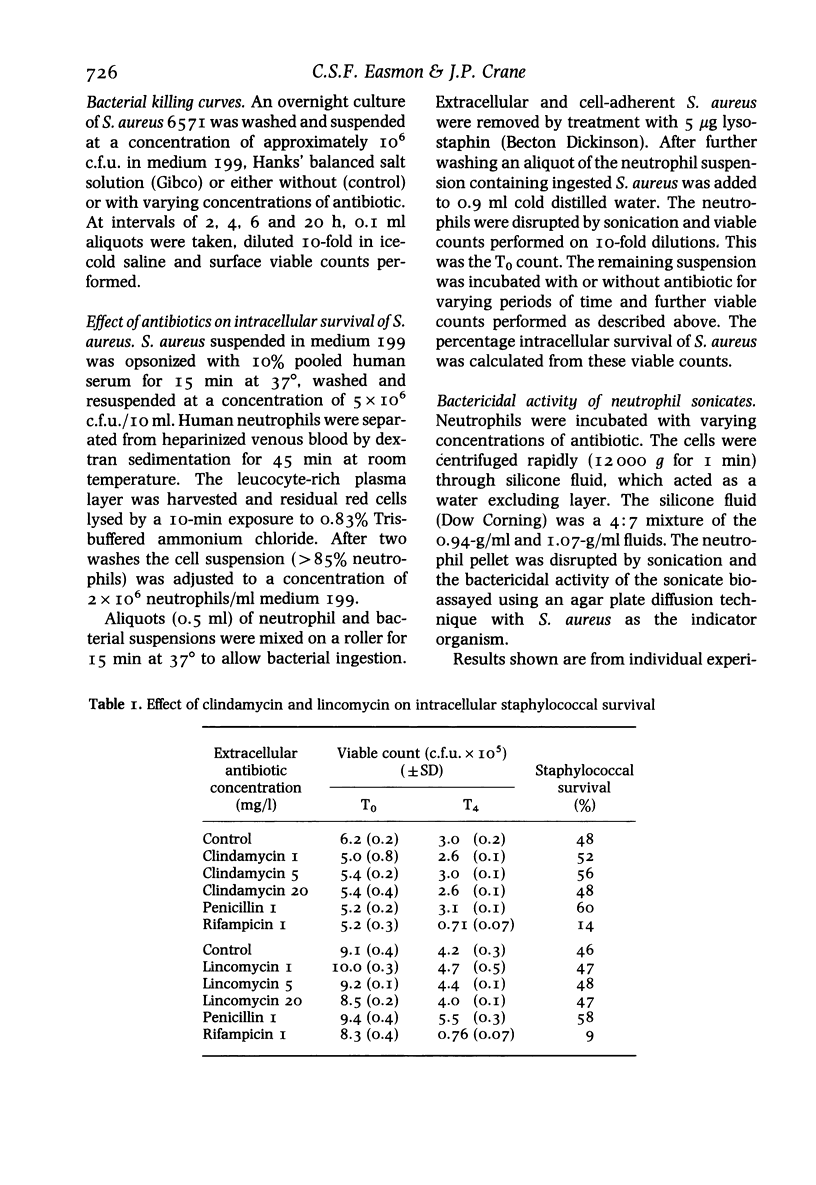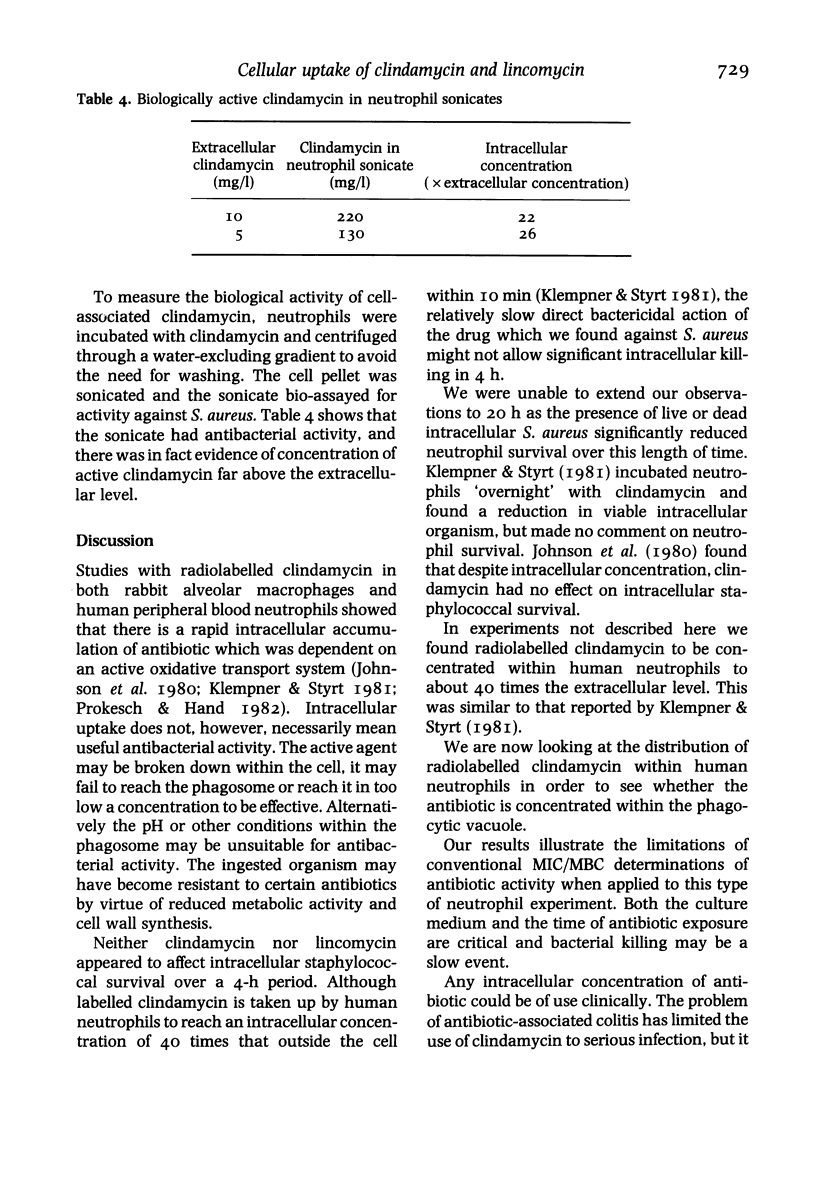Abstract
Neither clindamycin nor lincomycin killed intracellular Staphylococcus aureus over a 4-h period. Bio-assay of neutrophil sonicates after exposure to antibiotic showed the presence of active clindamycin at approximately 20 times the extracellular concentration. Clindamycin and lincomycin kill staphylococci relatively slowly, particularly in cell culture medium and balanced salt solution. This might account for their failure to kill intracellular staphylococci despite intracellular accumulation. The neutrophil experiments could not be extended to a time period (20 h) over which the antibiotics would kill S. aureus, as the presence of these bacteria within neutrophils for this length of time resulted in considerable cell lysis.
Full text
PDF





Selected References
These references are in PubMed. This may not be the complete list of references from this article.
- Johnson J. D., Hand W. L., Francis J. B., King-Thompson N., Corwin R. W. Antibiotic uptake by alveolar macrophages. J Lab Clin Med. 1980 Mar;95(3):429–439. [PubMed] [Google Scholar]
- Klempner M. S., Styrt B. Clindamycin uptake by human neutrophils. J Infect Dis. 1981 Nov;144(5):472–479. doi: 10.1093/infdis/144.5.472. [DOI] [PubMed] [Google Scholar]
- Prokesch R. C., Hand W. L. Antibiotic entry into human polymorphonuclear leukocytes. Antimicrob Agents Chemother. 1982 Mar;21(3):373–380. doi: 10.1128/aac.21.3.373. [DOI] [PMC free article] [PubMed] [Google Scholar]


